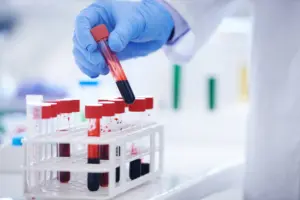
A recent study has unveiled a promising point-of-care test for detecting latent tuberculosis (TB) infection, particularly in resource-limited settings. Conducted by researchers at Karolinska Institutet in collaboration with colleagues in Vietnam, the findings are published in the journal Clinical Infectious Diseases. The study highlights the potential of the TB-Feron test to enhance screening efforts, especially in rural areas where access to advanced medical facilities is limited.
Lina Davies Forsman, a researcher at the Department of Medicine, Solna, Karolinska Institutet, emphasized the importance of this new testing method. “This test can help more people with latent tuberculosis to be detected and receive preventive treatment,” she stated. Latent TB infection often goes undetected, posing a significant risk of developing active TB, which can spread to others.
Traditionally, latent TB is diagnosed using the QuantiFERON-TB Gold Plus test, which requires laboratory infrastructure and trained personnel. This process can take one to two days, making it impractical in areas with high TB prevalence. The TB-Feron test, on the other hand, offers results in just 15 minutes and does not necessitate advanced equipment, making it more suitable for primary care settings.
In their study, researchers evaluated the TB-Feron test against the established QuantiFERON-TB Gold Plus test. The study included 345 adult participants from Hanoi, Vietnam, divided into three groups: individuals with confirmed TB, those in close contact with confirmed cases, and individuals with no known exposure to the disease.
The results indicated that TB-Feron demonstrated a high sensitivity rate, accurately identifying 88 percent of individuals expected to test positive for latent TB. For the QuantiFERON test, this figure was slightly higher at 92 percent. However, TB-Feron’s specificity—its ability to correctly identify healthy individuals without TB—was moderate at 70 percent, compared to 96 percent for the QuantiFERON test.
Among household contacts, the concordance between TB-Feron and QuantiFERON was notable, showing a 92 percent agreement in positive samples. Han Thi Nguyen, a pulmonologist and doctoral student at Karolinska Institutet, noted, “It is promising that TB-Feron works so well in an environment with a high disease burden. The test is patient-friendly and easy to use, with rapid same-day results.”
The researchers also assessed the reliability of the TB-Feron test by comparing results from two different groups of laboratory staff. Findings showed no systematic differences, indicating good reproducibility of the test results.
Significantly, the researchers have disclosed that there are no conflicts of interest related to this study. For more detailed information, the study titled “Diagnostic Accuracy of the STANDARD F TB-Feron FIA assay for Tuberculosis Infection in Vietnam: A Cross-Sectional Study” was published online on November 26, 2025, and is available for further review.
This advancement in rapid testing for latent tuberculosis could play a vital role in improving public health responses in regions most affected by this infectious disease, providing a more efficient pathway to diagnosing and treating latent TB before it becomes active.







